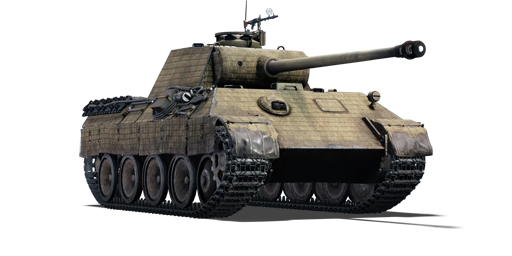The Panzerkampfwagen V Ausführung A (Panther A) (Sd.Kfz. Index: Sd.Kfz. 171) is the second production variant of the iconic Panzerkampfwagen V Panther medium tank family. Many Panther D characteristics, such as the small rectangular 'letterbox' hull machine gun opening, remained on the early production Panther A manufactured between July and December 1943. The Panther A turret has received significant modifications. For starters, the gun mantlet on the Panther A turret was larger than the one on the previous Panther D. The design of the cast turret side directly behind the gun mantlet was modified to a dish-shaped protrusion to fit the new gun mantlet. In addition, a new dome-shaped cast-armour commander's cupola was designed, and a ring was mounted on the commander's cupola to allow for the mounting of an anti-aircraft light machine gun. A single-speed turret power traverse system was also introduced, allowing Panther A to react to adversary tanks considerably faster than before. Finally, the German Army put a unique coating called Zimmerit on the tank's outside surface, anticipating that the Soviets and Allies would deploy magnetic mines to destroy the tank. The Zimmerit aims to minimize the effectiveness of magnets adhering to the metal hull.
Introduced in the Closed Beta Test for Ground Forces before Update 1.41, the Panther A was part of the next generation of medium tanks that officially superseded the Panzer IVs in World War II. The Panther A is widely regarded as one of the best medium tanks of World War II, combining mobility, protection, and firepower. After the Soviet T-34, it was one of the most influential tank designs and served as the foundation for many later medium tank designs in other countries. The turret traverse speed is much faster than the previous Panther D model, lowering reaction time to unexpected spotting of enemies at close quarters significantly. Players can also use the commander's cupola-mounted MG34 light machine gun as a deterrence to hostile low-flying aircraft.















